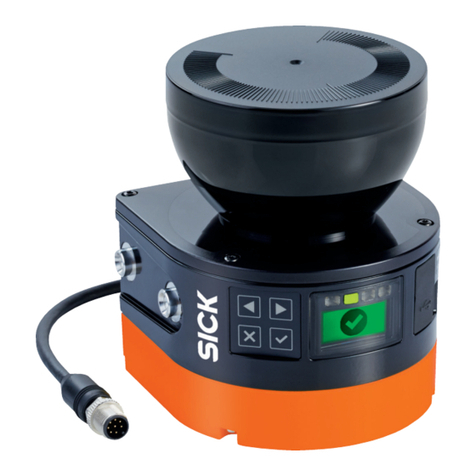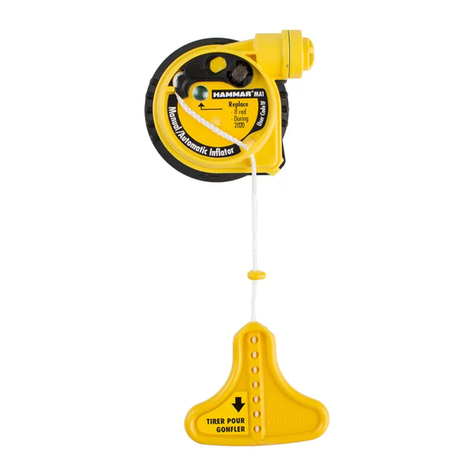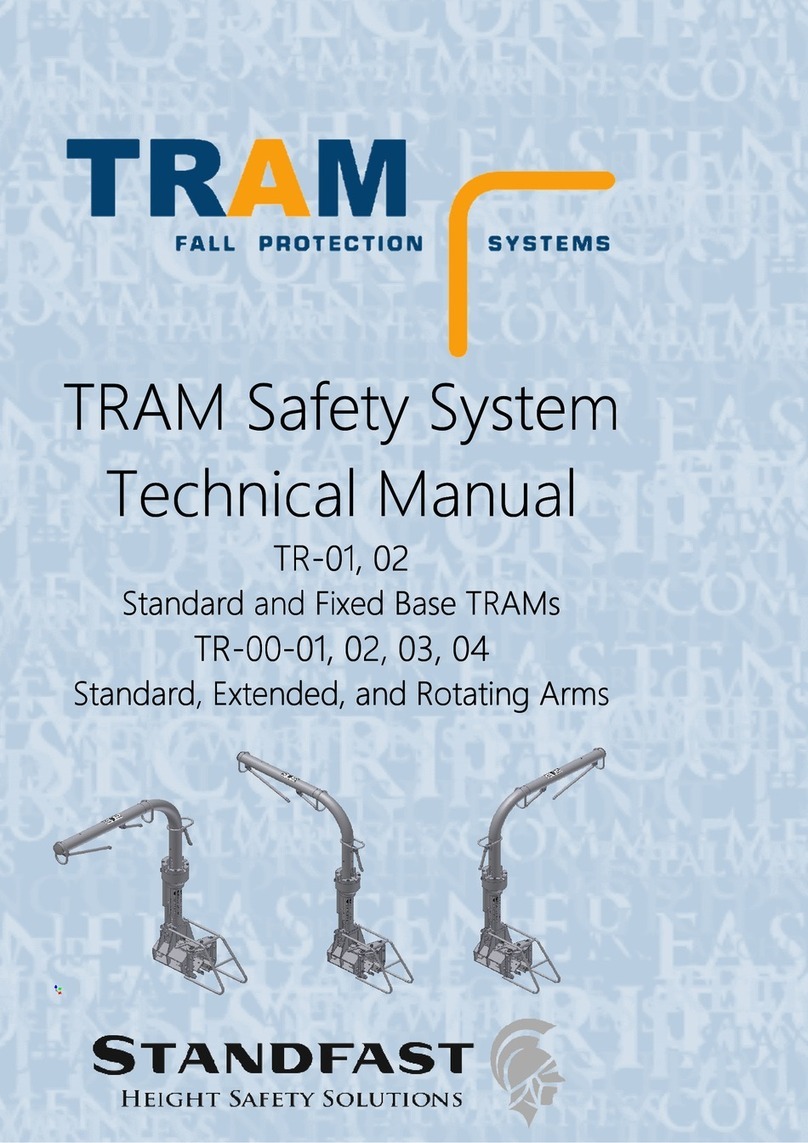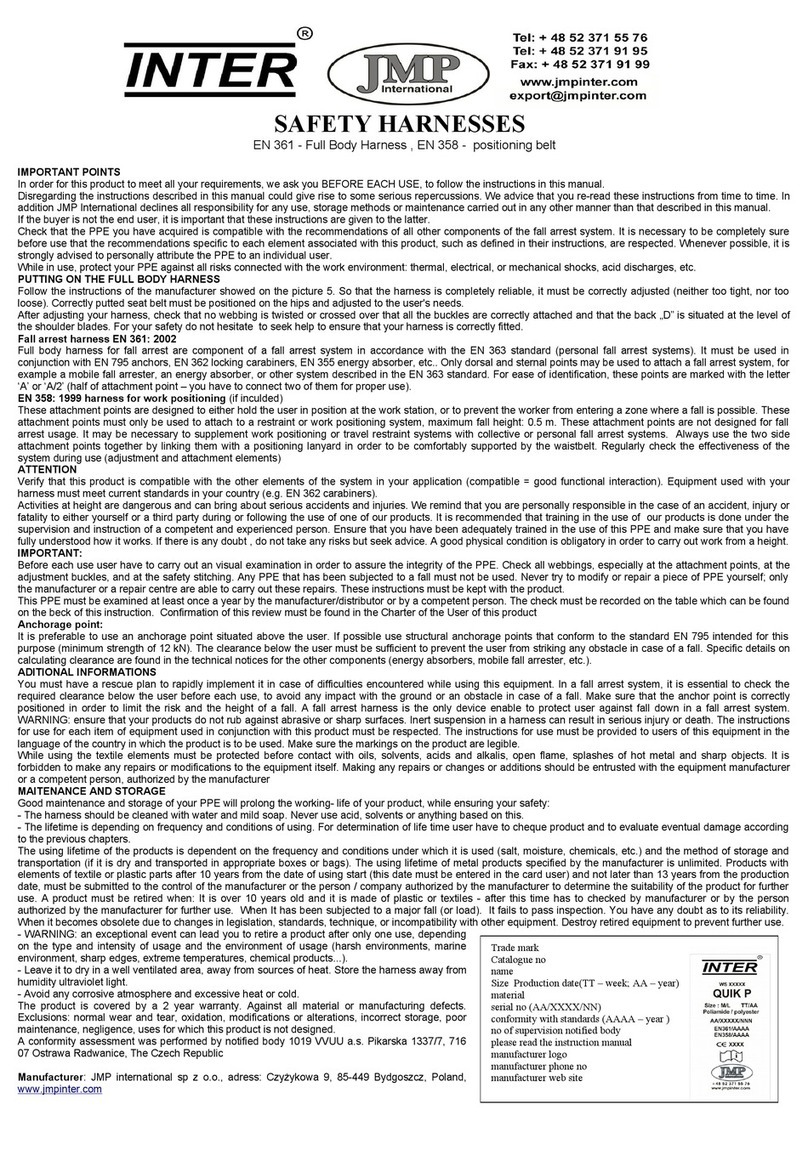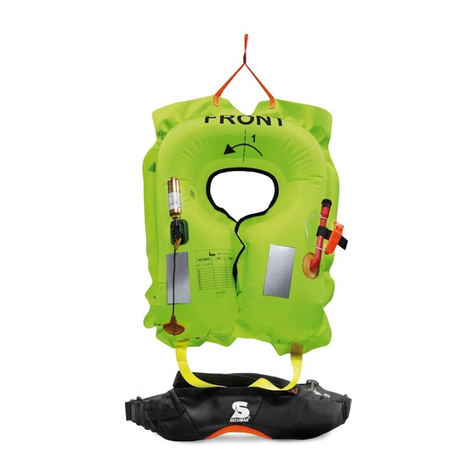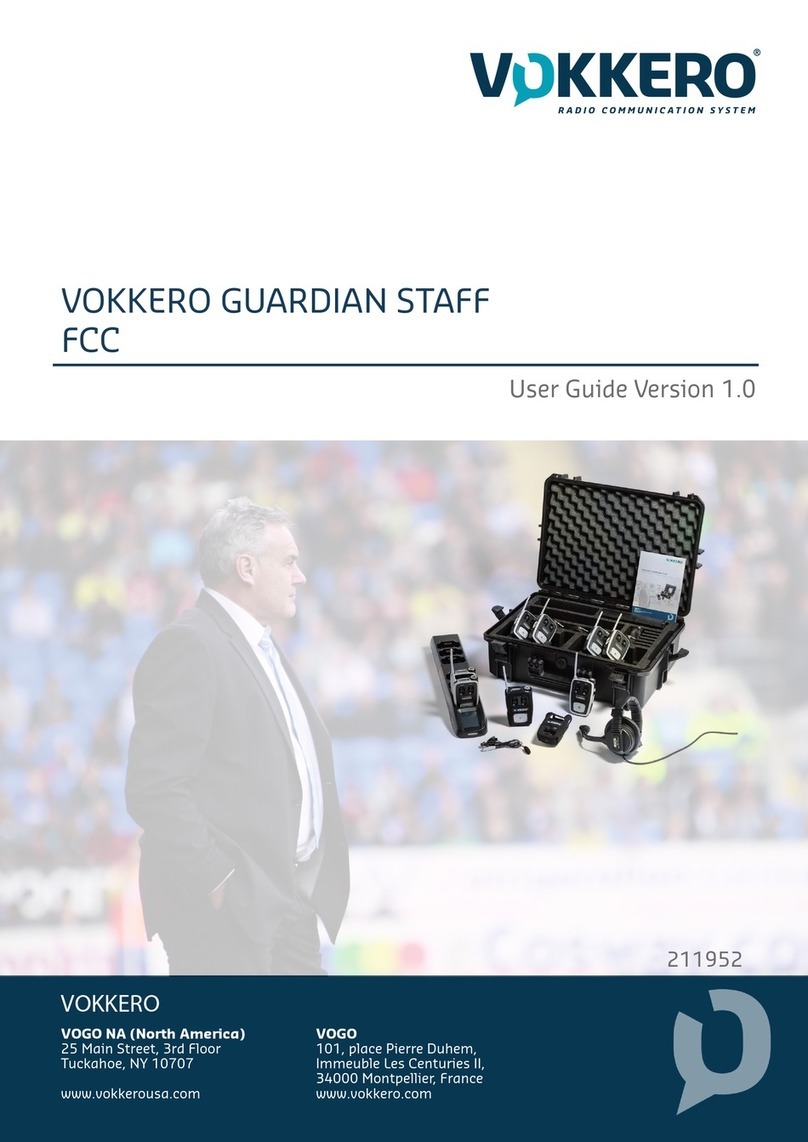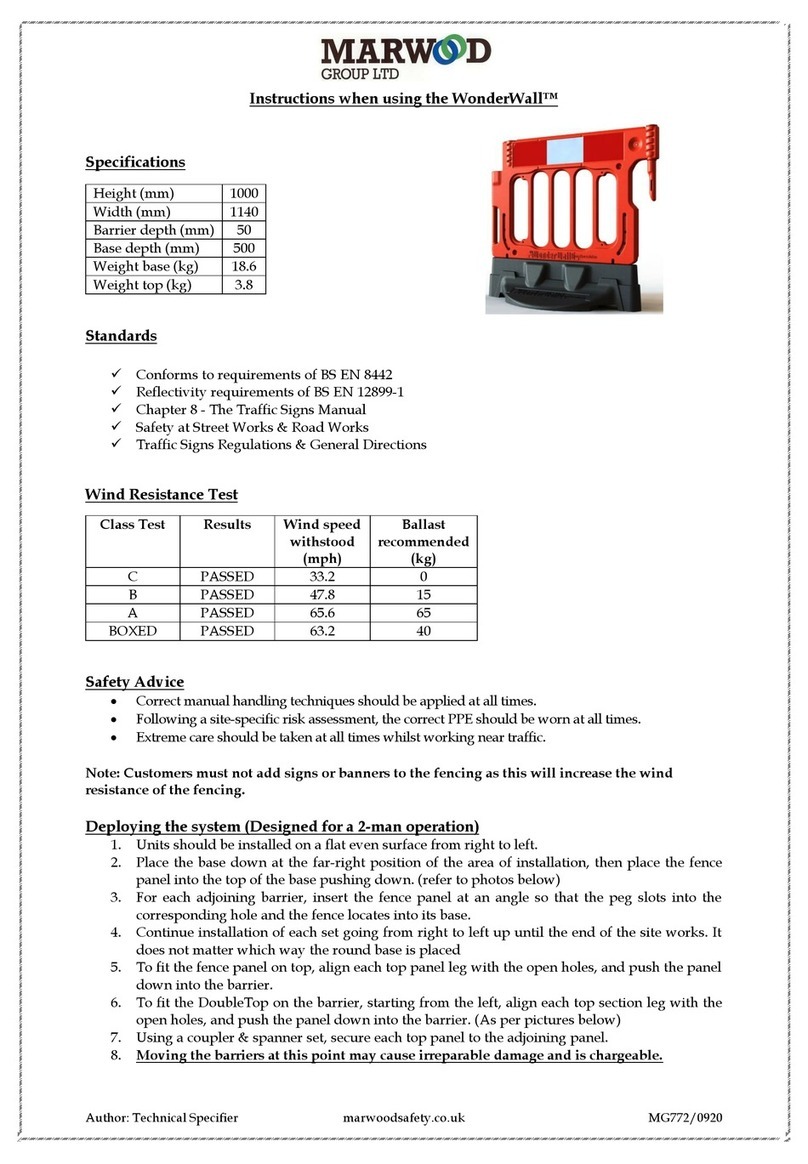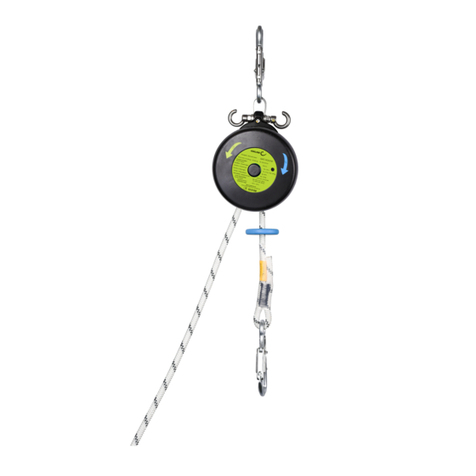Thompson Tree Tools Hipster User manual

HIPSTER USER INSTRUCTIONS
WARNING!
This tool is for expert use only!
The HIPSTER is a rope grab for adjusting of the length of a work positioning lanyard. The HIPSTER
is solely for use as part of a work positioning system.

READ & UNDERSTAND THIS MANUAL CARFULLY
If you do not understand any part of this manual, DO NOT use the HIPSTER
Rope climbing and its associated activities are inherently dangerous and carry a significant risk of
injury or death that cannot be fully eliminated. You must be medically fit to use the HIPSTER, talk to
your doctor prior to use.
This manual does NOT teach you everything you need to know about rope climbing, or using a work-
positioning lanyard or work-positioning system! It also does NOT tell you everything that can go wrong
or every danger present while rope climbing, or using a work-positioning lanyard or work-positioning
system.
FAILURE TO FOLLOW THE INSTRUCTIONS SET FORTH IN THIS MANUAL MAY RESULT IN SERIOUS
INJURY OR DEATH.
Thoroughly familiarize yourself with this manual prior to using the HIPSTER and refer to this manual
before each use. Employers, if you are providing your employees with the HIPSTER for use, you
must instruct your employees as to proper use and warnings before each use of the HIPSTER.
CAUTION: THERE IS THE POTENTIAL FOR PINCH INJURY AND OR ROPE BURN WHEN USING THE
HIPSTER.
This manual assumes you have an understanding and working knowledge of the latest American
National Standards Institute (ANSI) Safety Requirements for Arboricultural Operations (ANSI Z133),
rope climbing techniques, and how to identify and assess safe risks associated with climbing, work
positioning lanyards and work positioning systems. If you do not have such understanding or
knowledge in one or more of these areas, seek out training from someone who does before using the
HIPSTER.
Always observe and comply with the standards of ANSI Z133 while using the HIPSTER.
It is the user’s responsibility to obtain specific training on using climbing, work positioning lanyards,
work positioning systems, and to use the HIPSTER safely.
By using the HIPSTER you assume full risk for any consequential, incidental, direct, or indirect
damages (including damages for loss of business profits, business interruption, and the like) arising
out of the use of the HIPSTER. Because some states do not allow the exclusion or limitation of
liability for consequential or incidental damages, the above limitations may not apply to you.
Always use an independent fall protection system when using the HIPSTER. The HIPSTER was not
designed to catch a fall and must NOT be shock loaded. Always keep slack out of your work
positioning system, including your work positioning lanyard, to avoid the possibility of shock loading.
You must have a rescue plan in place prior to each use and a means to implement it; inert
suspension in a harness can quickly result in death.

Use extreme caution around electrical hazards, moving machinery or near sharp edges or abrasives.
Avoid contact of your equipment, including your HIPSTER and work positioning lanyard, with sharp
edged or pointed tools, high temperature surfaces, welding or other heat sources, electrical hazards
or moving machinery. Be aware of the lanyards position and placement on the pole or tree at all
times in relation to the operations being performed. Use extreme caution when performing
operations such as cutting, drilling, sawing, etc. Always perform this type of work well above the
lanyard to avoid the potential of tool contact with the HIPSTER or lanyard, causing damage which
may result in a fall, serious injury or death.
Remember your climbing system is only as strong as its weakest link. Check all or your equipment,
including your HIPSTER, before and after each use. Make sure all of your pieces of equipment are
compatible with each other.
Be aware that some equipment can lever against the gate of a carabiner and break it open. You must
avoid this situation by keeping equipment properly positioned at all times.
The HIPSTER must be used with the proper rope. Do not use the HIPSTER on laid or twisted rope. Use
braided ropes only of the correct diameter. The HIPSTER is designed for use with ropes typically used
by arborists, but you must test it with your rope using the Function Test outlined in this manual. If the
rope is too stiff, it will not work move smoothly through the HIPSTER, and if too soft or too small the
HIPSTER will slip and not hold the rope under load.
Do not use on icy ropes. Prior to and while in use, particularly in extreme weather conditions (i.e.
blizzards, high winds, etc.) – guard against debris (pebbles, twigs, packed snow, ice, mud, etc.)
becoming wedged between the clutch plates as well as any buildup on the straps, as debris / build up
could impair or prevent proper function. If noted, ensure that the HIPSTER remains clear. Test for
slippage by performing the Function Test outlined below in this manual.
The HIPSTER is intended for a single user. Do not load it with more than one person. Do not lend it to
someone else. The HIPSTER is for personal use only, NOT for towing or hoisting.
Fall protection equipment (i.e. fall arrest, work positioning, climbers, retrieval, suspension etc.),
including the HIPSTER, should not be resold or provided to others for re-use after use by the original
user as Thompson Tree Tools, LLC cannot assure that a used product applicable standards and is safe
for use by a subsequent user.
The HIPSTER will eventually wear out and will slip rather than hold the rope under load. Therefore,
you must inspect and perform the function test with the HIPSTER prior to each use with this in mind.
When your HIPSTER is worn-out, Thompson Tree Tools, LLC can rebuild it for you – contact us for
current costs. Only Thompson Tree Tools, LLC, or those people authorized in writing by Thompson
Tree Tools, LLC, may make repairs to the HIPSTER.

DESCRIPTION
The HIPSTER is a compact lanyard adjuster that features:
-Easy one-handed operation, for lanyard length adjustment.
-Toothless rope interface, which will not put puffs in your rope.
-The ability to release under load.
-Smoothly fairleads, to take up slack.
ROPE SELECTION
The HIPSTER works on ropes 11- 12.5mm or 7/16-1/2 inch. Use low stretch, tight sheath, braided
ropes that are in accordance with the ANSI Z133 safety standards.
Compatible ropes include Samson’s 7/16” Velocity, Sterling Scion Blue 11.5mm, or Teufelberger
Tachyon 11.5mm.

Threading your rope lanyard through the HIPSTER.
With your HIPSTER facing up (top handle up, and bottom attachment point down), thread the tail end
of your rope lanyard through the HIPSTER from the top down (tapering the end of you rope to a point,
and taping, can help the threading process as shown in the picture below).
Once on the rope lanyard, the HIPSTER easily slides up along the lanyard toward the working end, but
grabs when pulled down by the bottom attachment point, toward the tail end.
IMPORTANT! Tie a stopper knot (such as a double fisherman’s knot, see below picture) in the end
of your lanyard to ensure that HIPSTER cannot come off the end inadvertently. Make sure your
stopper knot is tied, dressed and set, and is far enough from the end to ensure it works as intended.

On the working end of the rope lanyard, attach a triple locking carabiner, or the like, with a suitable
knot, or a spliced eye. (See picture below)
Attach the HIPSTER to your side D-ring of your saddle with a triple locking carabiner, check that the
handles of the HIPSTER are facing out, and away from your body, use a keeper (like a RockO wire eye),

to keep the carabiner oriented correctly to the bottom attachment point of the HIPSTER, to avoid
cross loading the carabiner. (See pictures below)

FUNCTION TEST
Before every climb perform a function test of your lanyard system. With your lanyard around a tree
or the like, and connected to your harness D-rings as shown above, lean back and load the lanyard
with your weight (see picture below). If the HIPSTER holds the rope, push against the tree to load the
lanyard even more. If the HIPSTER holds the load and does not slip it is safe to use it for climbing. If
the HIPSTER slips at any point during this test, stop and do not climb on the HIPSTER. Either the
HIPSTER is worn out and needs to be retired or the rope is incompatible and needs to be replaced
with a larger rope.
,
PRACTICE
The HIPSTER is a high-performance climbing tool that requires practice to operate well.
Always wear repelling gloves when operating the HIPSTER climbing tool.
When using the HIPSTER climbing tool, restrict hand placement to the top handle. Avoid placing
fingers between the clutch plates because the plates squeeze together under load.
If your body, clothing or equipment gets sucked into the device, you could be injured and/or stuck.
This situation is extremely dangerous and can quickly result in death. You must be able to rescue
yourself in any event.
Get accustom to your HIPSTER and how it acts on your rope lanyard. Practice low to the ground and
go slowly until you become comfortable releasing the HIPSTERS grip in a predictable controlled way,
before climbing higher.

With your rope lanyard around a tree or the like, and the working end clipped into the other side D-
ring of your saddle, lean back and weight the lanyard, the HIPSTER will grab the rope and hold.
To release the HIPSTER’s grab on the rope, and lengthen your lanyard, pull down on the top handle of
the HIPSTER. Start by pulling gently on the top plate. Slowly pull harder until you find the point where
the rope starts to slip.
Use caution, the extent you pull on the top plate of the HIPSTER, governs the speed the rope slips
though the HIPSTER.
Release the top handle to stop.
To shorten your lanyard, lean in to the tree and take up any slack by pulling the tail of the lanyard
back towards the working end. The HIPSTER will act as a fairlead with the rope moving through the
HISPTER smoothly as the slack is pulled out and grabbing the rope when weight is applied.
BEFORE CLIMB CHECKS
Before every climb:
-Check that all pivot points move freely.
-Check clutch plates for cracks or deformation or wear. Discard the tool that has suffered abuse.
-Check that the connecting links are in good condition and that the rivet heads look normal. Check
links and rivets for cracks or deformation.
-Carefully check your lanyard for nicks, cuts and any other damage.
-Make sure you have a stopper knot that is tied, dressed, and set, in the tail of your lanyard as shown
in picture.
-Perform a function test to ensure your HIPSTER is in good working condition and the rope you are
using is compatible with the HIPSTER.
This list of checks is not exhaustive and does not replace any other climbing checks that you should or
are required to do.
HIPSTER CARE
Keep your HIPSTER dry. If it does get wet, dry it off as soon as possible.
On a monthly basis, lightly oil all the pivot points, with light oil such as Mobil One 10w30, then wipe
off with a clean, dry cloth.

Inspect your HIPSTER for damage before every climb. If damaged in anyway, retire it immediately or
send it back to us for repairs.
The HIPSTER is made of stainless steel and aluminum, so avoid contact with chemicals that attack
aluminum. If your HIPSTER becomes dirty, clean it in water, then dry and oil it immediately.
Do not climb using a damaged HIPSTER.
Avoid hard impacts such as a drop on hard ground. Do not use your HIPSTER if it is subjected to a hard
fall.
If any part of the HIPSTER is broken or deformed, do not use it.
Thompson Tree Tools LLC
3053 Dubois Road
Ithaca NY 14850
Thompsontreetools.com
Table of contents
Popular Safety Equipment manuals by other brands

schmersal
schmersal FWS 1205 operating instructions
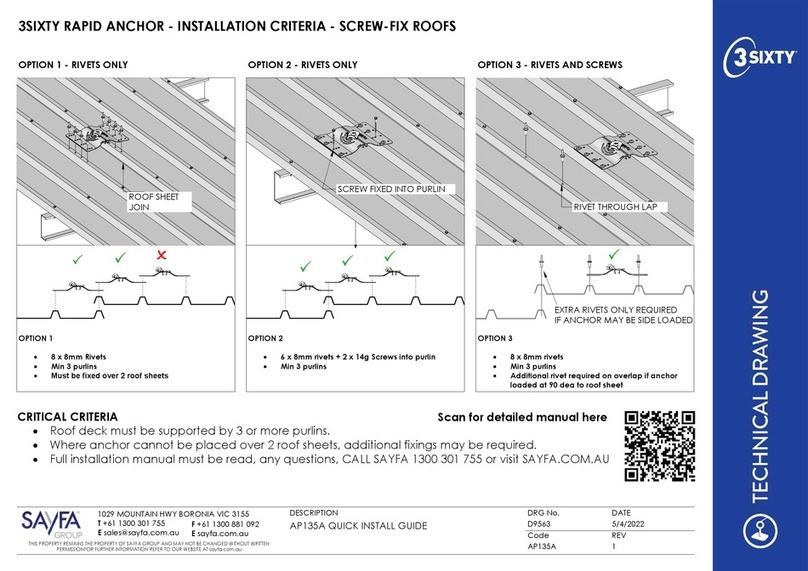
SAYFA SYSTEMS UK
SAYFA SYSTEMS UK 3SIXTY quick start guide
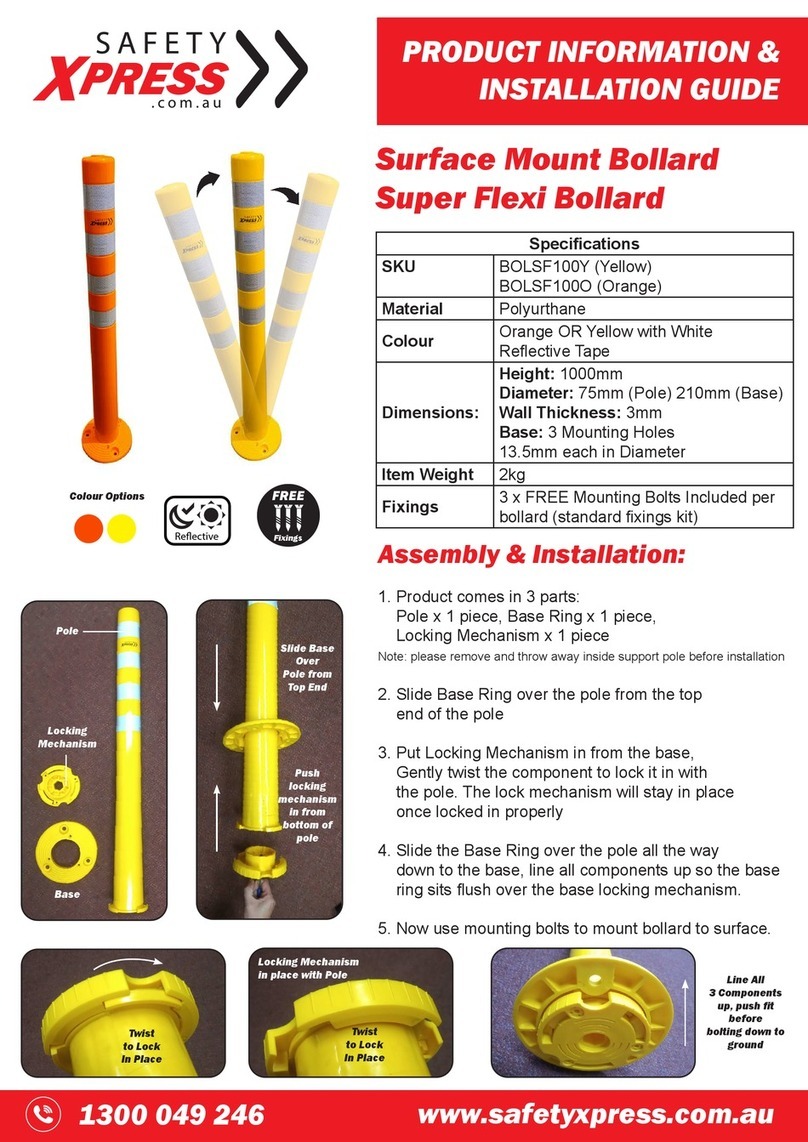
Safety Xpress
Safety Xpress BOLSF100Y PRODUCT INFORMATION & INSTALLATION GUIDE
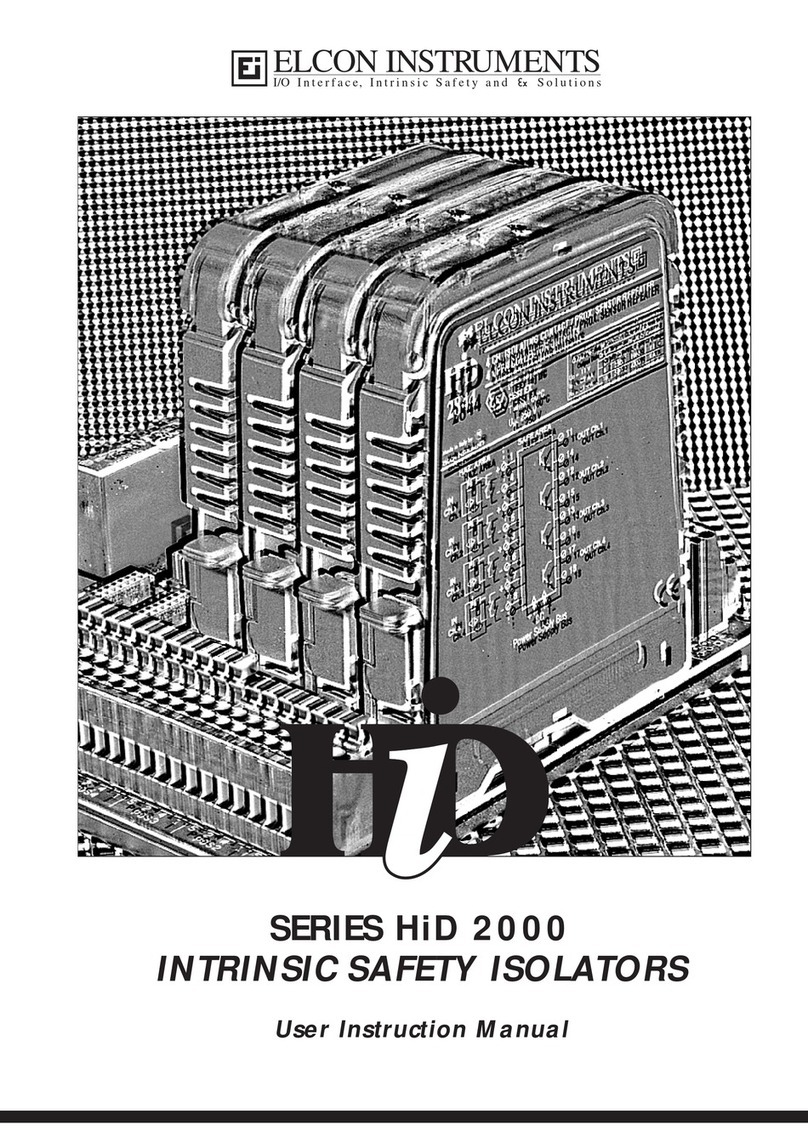
Elcon
Elcon HiD 2000 Series User instruction manual
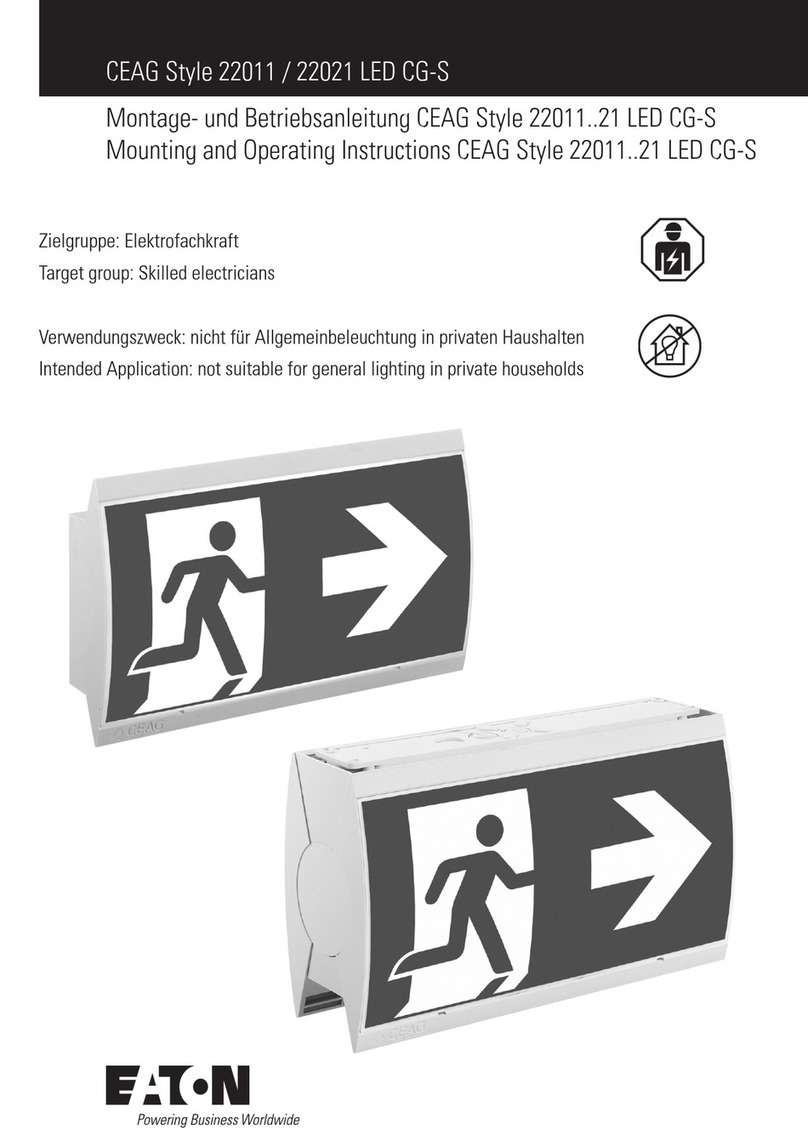
Eaton
Eaton CEAG 22011 LED CG-S Series Mounting and operating instructions
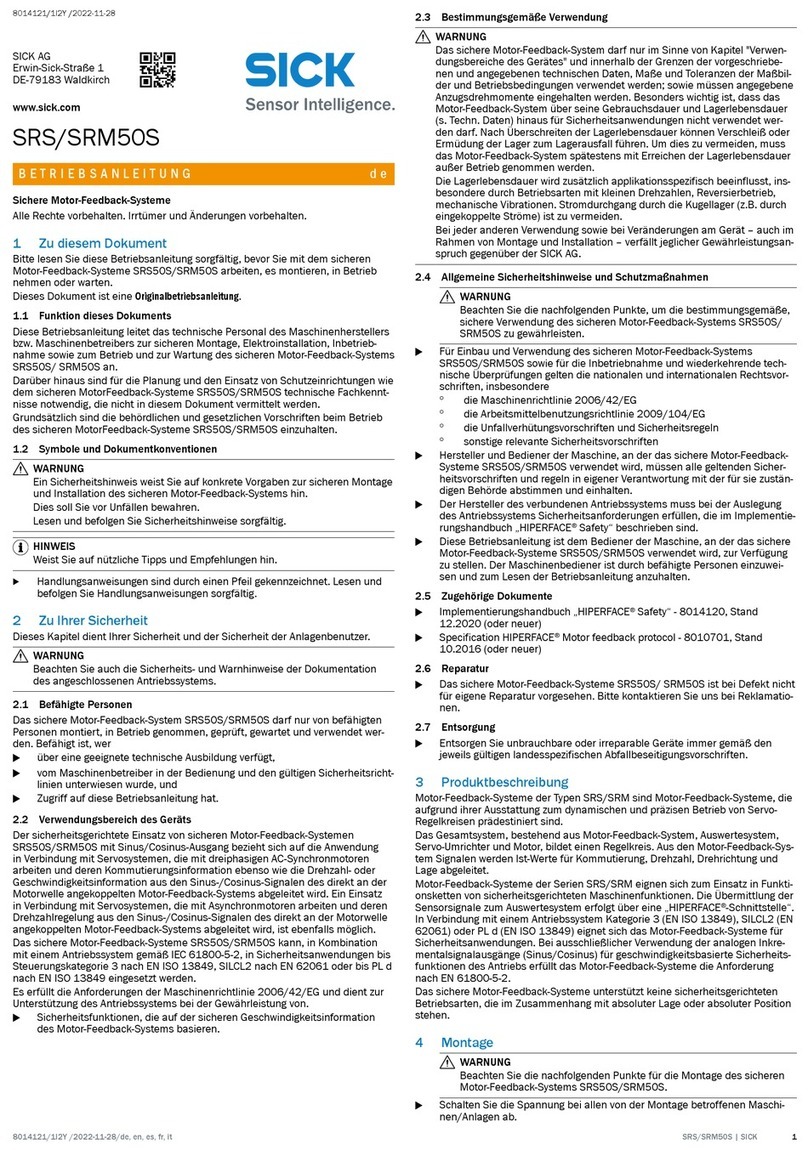
SICK
SICK SRS50S operating instructions

